Any website owner’s dream is to make their site a popular destination that people naturally find. Not only is this possible, but you have (multiple) reliable ways of determining how and where that traffic is coming from.
Now, there are free ways of measuring and monitoring website traffic. These are reliable enough, especially for those who aren’t yet earning anything from their website (you can only justify so many costs). As your site grows, there are also plenty of paid options that give you more accurate data, more data, or more ways to analyze traffic data. I want to give you the best free and paid ways for you to start checking your website traffic today.
Why Check Website Traffic?
Understanding website traffic isn’t just about numbers. It helps website owners, marketers, and businesses make decisions that improve their websites. From tracking your site traffic (and a host of inter-connected metrics), you can learn:
- Where your visitors come from (organic search, social media, direct traffic, etc.).
- What content keeps users engaged and what makes them leave.
- How different marketing strategies impact visitor numbers.
- What keywords and search queries bring people to your site.
- Whether your website is growing or needs adjustments to gain traction.
Traffic analysis isn’t just for tracking your own site. With some tools, you can check competitor traffic as well. This gives you insight into how you can identify gaps in your content, discover high-performing keywords, and refine your marketing strategy.
Free Tools for Checking Site Traffic
Free tools offer essential insights without extra costs. These tools help beginners understand visitor behavior, keyword rankings, and referral sources.
We’ll start with the basics first. Google Search Console (GSC) and Google Analytics (GA4) are tools you never graduate from. Some people choose an alternative to Google Analytics (for privacy reasons), but in any case, analytics and webmaster tools are par for the course.
1. Google Search Console
GSC is a very unique tool in that it gives you first-party data about how your site performs in Google Search results. This includes traffic trends by URL and also traffic trends by search query. It should be a crime not to set it up immediately. Other search engines, like Bing, have their own webmaster tools that do similar things.
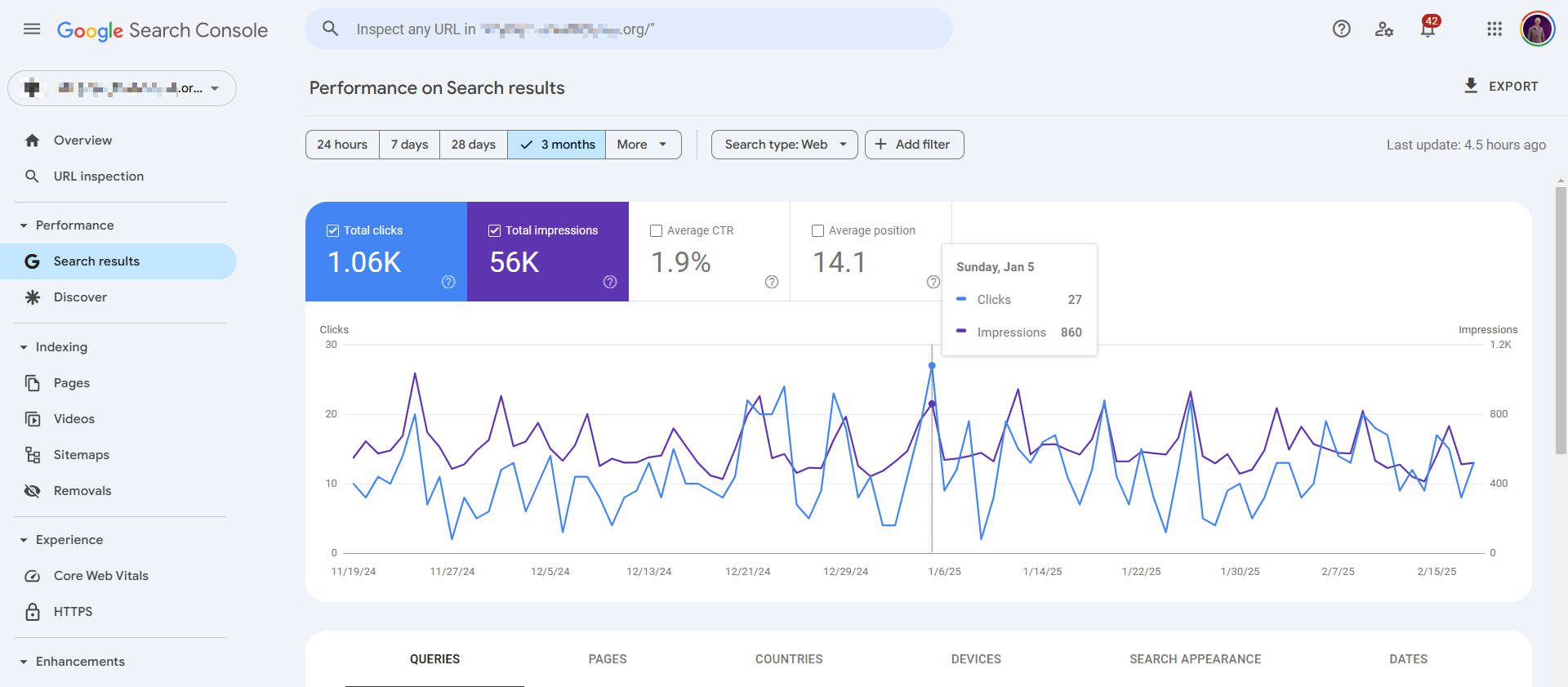
The first data source you need to get to monitor Google Search traffic
It’s also worth mentioning that most other SEO tools will ask that you connect your GSC to its tooling to bring some of that first-party data to their extensive data sources. This makes their data more accurate, so that’s why I say that GSC is mandatory and the first thing you should add on a published site.
Click to see which metrics GSC tracks for you
| GSC Metrics | What each means |
|---|---|
| Total Clicks | Number of clicks from Google Search to your site |
| Total Impressions | Number of times your site appears in search results |
| Click-Through Rate | Percentage of impressions that result in traffic to your site |
| Search Queries | Keywords that brought users to your site |
| Average Position | The average ranking of your pages for a specific keyword |
| Top Pages | Your pages with the most traffic from Google Search |
| Countries | Geographic location of your search traffic |
| Devices | Traffic breakdown by desktop, mobile, and tablet |
| Core Web Vitals | Page speed and user experience metrics |
| Index Coverage | Pages Google has indexed (or errors preventing it) |
| Sitemaps | Submitted sitemap status and indexing insights |
| Manual Actions | Manual penalties that Google has applied to your site |
| Security Issues | Malware, hacks, or security risks detected by Google |
| Links Report | Websites linking to your content |
2. Google Analytics
Google Analytics (or any alternative) will give you insights into how users interact with your website. Most of the time, you can tell from what source a user came from, but by and large, the benefit of analytics is to see how all that traffic coming to your site behaves.
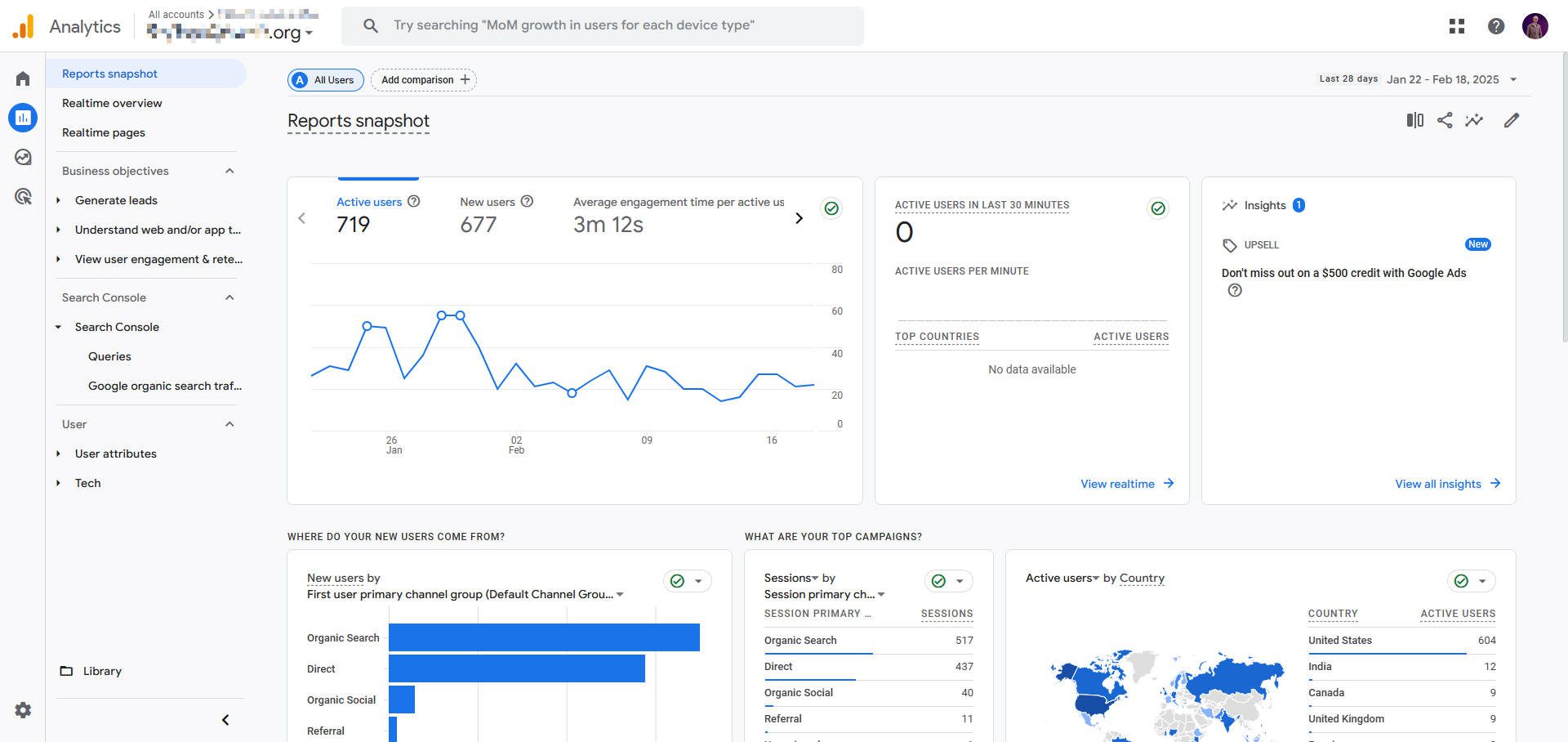
Google Analytics also tells you about the quality of your traffic through various connected metrics
3. Google Business Profile
Google Business Profile (and the alternative tools for other search engines, like Bing) will give you website traffic data from users interacting with your business profile in Google Search results. If you run a local business or a website that deals with local content, this is another free tool that will show you some of your website traffic (in addition to how many times people got directions to your locations and called you from your profile).
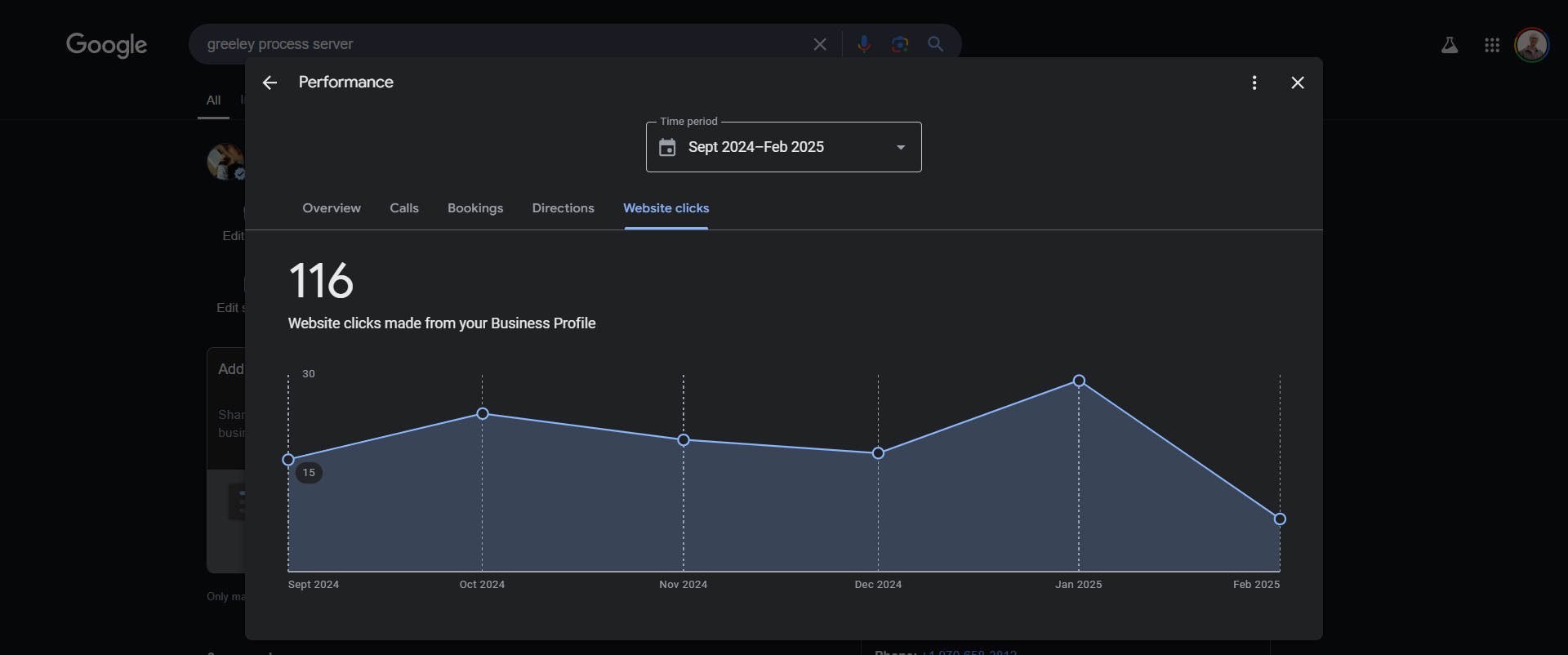
This is an underrated and free way of checking website traffic with high intent to do business with you
Other Free Website Traffic Checkers
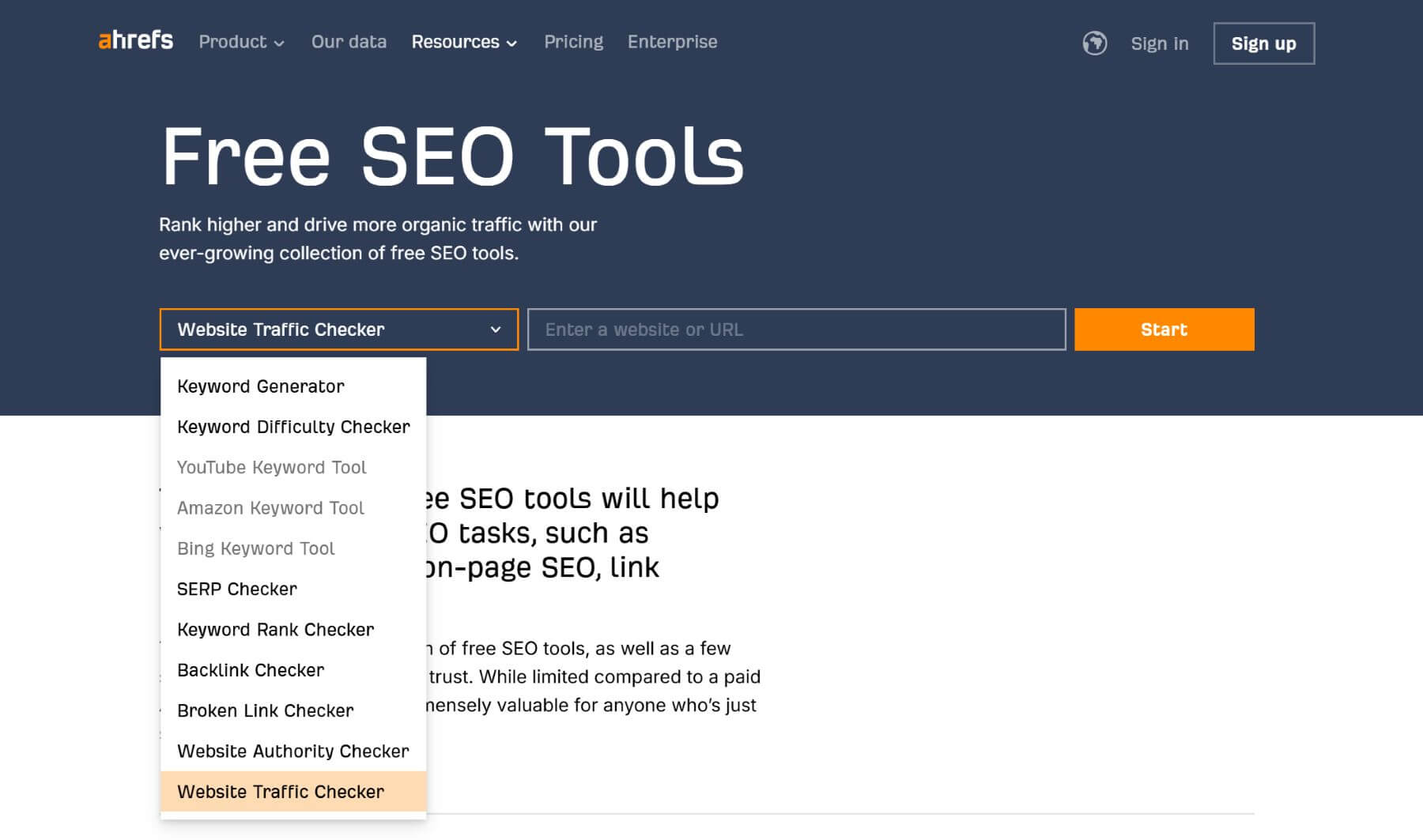
If you are looking for a quick and easy traffic overview for any website domain, any of the following free SEO tools will be helpful. Some, like Ahrefs allow you to generate analytics for keywords, backlinks, and more.
When You Need to Switch from Free to Paid Tools
Free tools work well when:
- You’re running a personal blog or a very small business site and are more curious than anything.
- Your website content is very, very niche, and you don’t really need to play the keyword game.
- You just need basic insights on visitors and engagement.
If free tools meet your needs, there’s no urgency to switch. However, paid tools provide deeper insights, competitive analysis, and automation that free tools lack. They will also tend to have more accurate data about your website traffic and better tools for creating new content that stands a chance to bring in net-new traffic.
An underrated but helpful feature of paid tools is that they also give you approximate traffic data for websites you do not own. This level of insight into your competitors can really help you out as you start to need more than your own data to create winning SEO strategies.
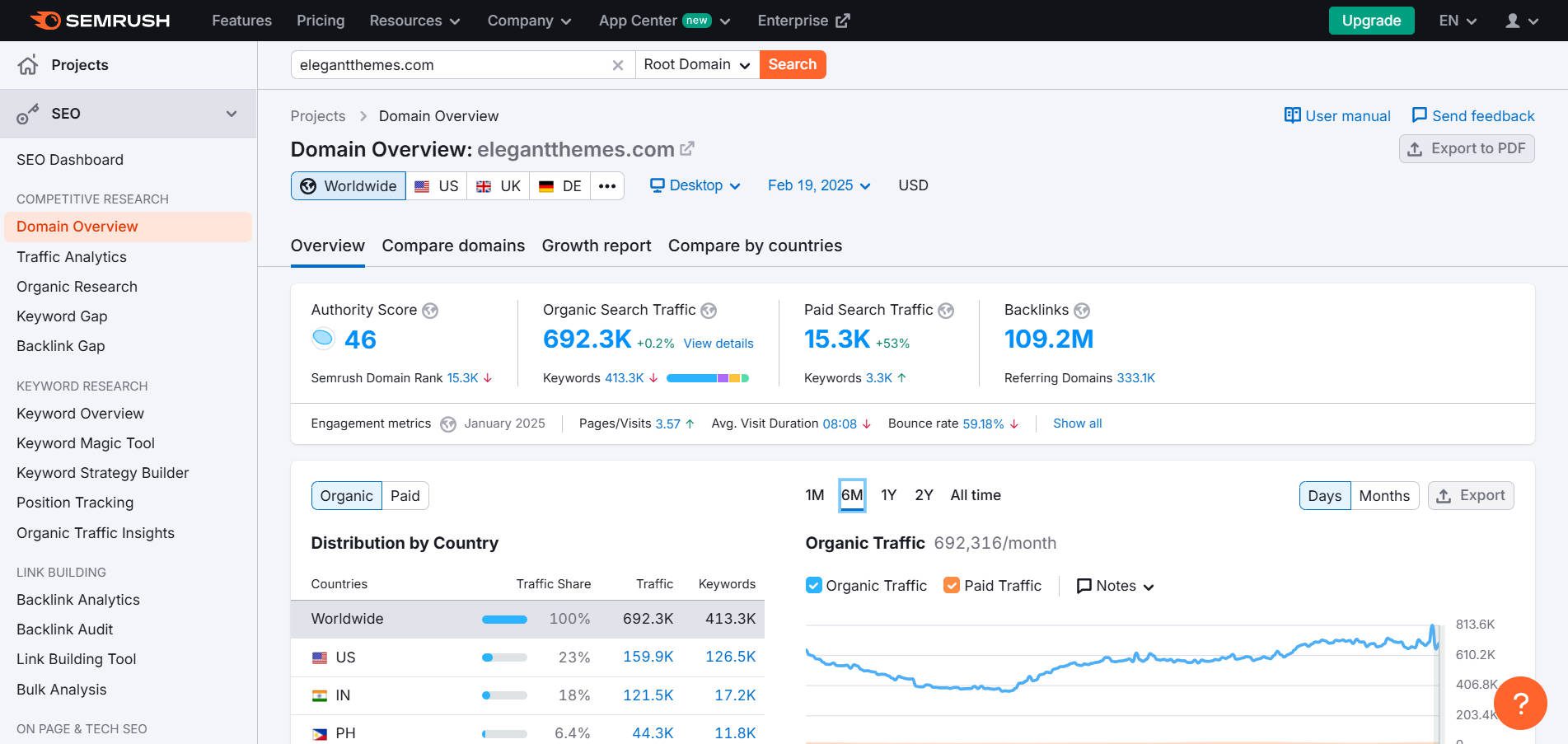
Example of a Domain Overview from Semrush for any domain (plus they have more tools for competitor analysis)
Paid Tools for Checking Site Traffic
There are a lot of different kinds of paid tools that can help you keep an eye on your traffic. I’ll try to cover each category and give you options so you know how to go comparison-shopping for your needs.
5. Semrush (Free & Paid)
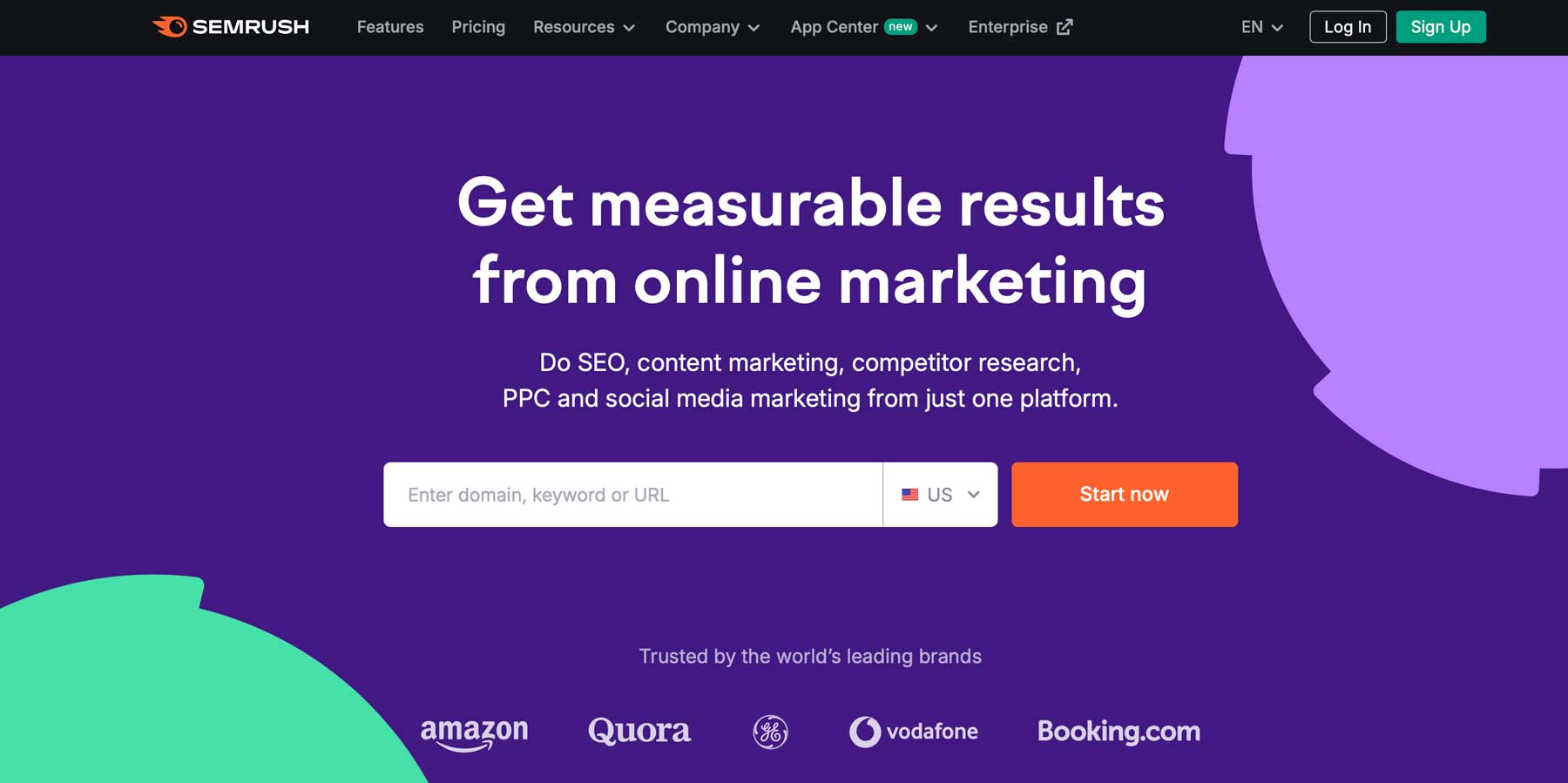
Semrush is perhaps the most popular SEO tool right now. It should be considered one of the best free options because it offers a free website tracker and a decent free plan that doesn’t expire. The pro version helps you by analyzing keyword search volumes, tracking rank positions, snooping on your competitor, and really so much more. If you are getting serious about SEO, Semrush is the tool for you. It’ll help you find opportunities for creating new pages for your website that you can reasonably rank for (with things like search volume, keyword difficulty, and similar keywords).
As you can expect, we’ve written a Semrush review for you to look into.
6. MonsterInsights (Free & Paid)
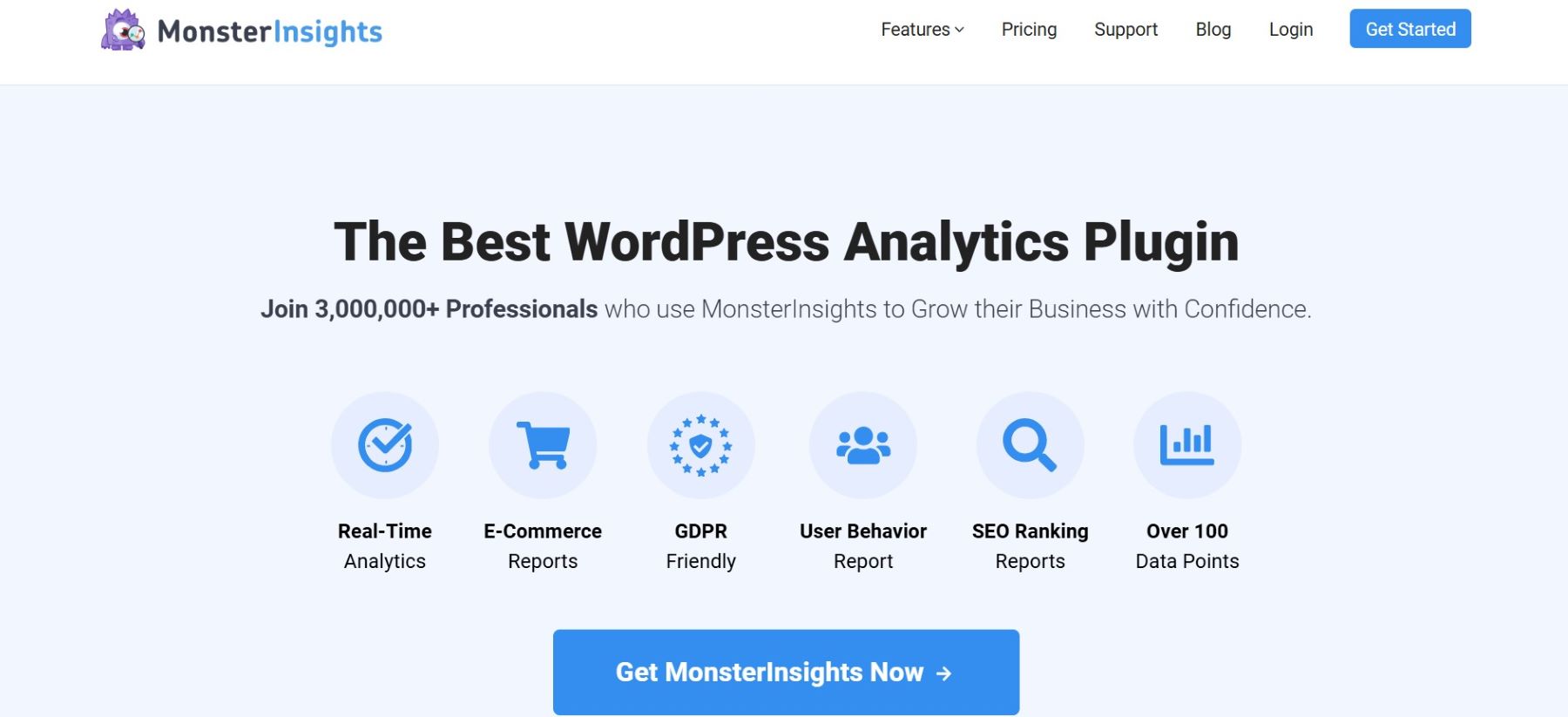
MonsterInsights is a popular WordPress plugin that makes Google Analytics easier to handle. It also puts a traffic dashboard right inside your WordPress Admin dashboard, so you can cut down on the number of places you need to check. MonsterInsights only works with Google Analytics, so if you don’t have it (or have it set up correctly), it’s not going to be of much help. However, it has its benefits, mainly in that it helps you set up Google Analytics and makes the traffic data easier to review.
If this interests you, see our MonsterInsights review.
7. Jetpack
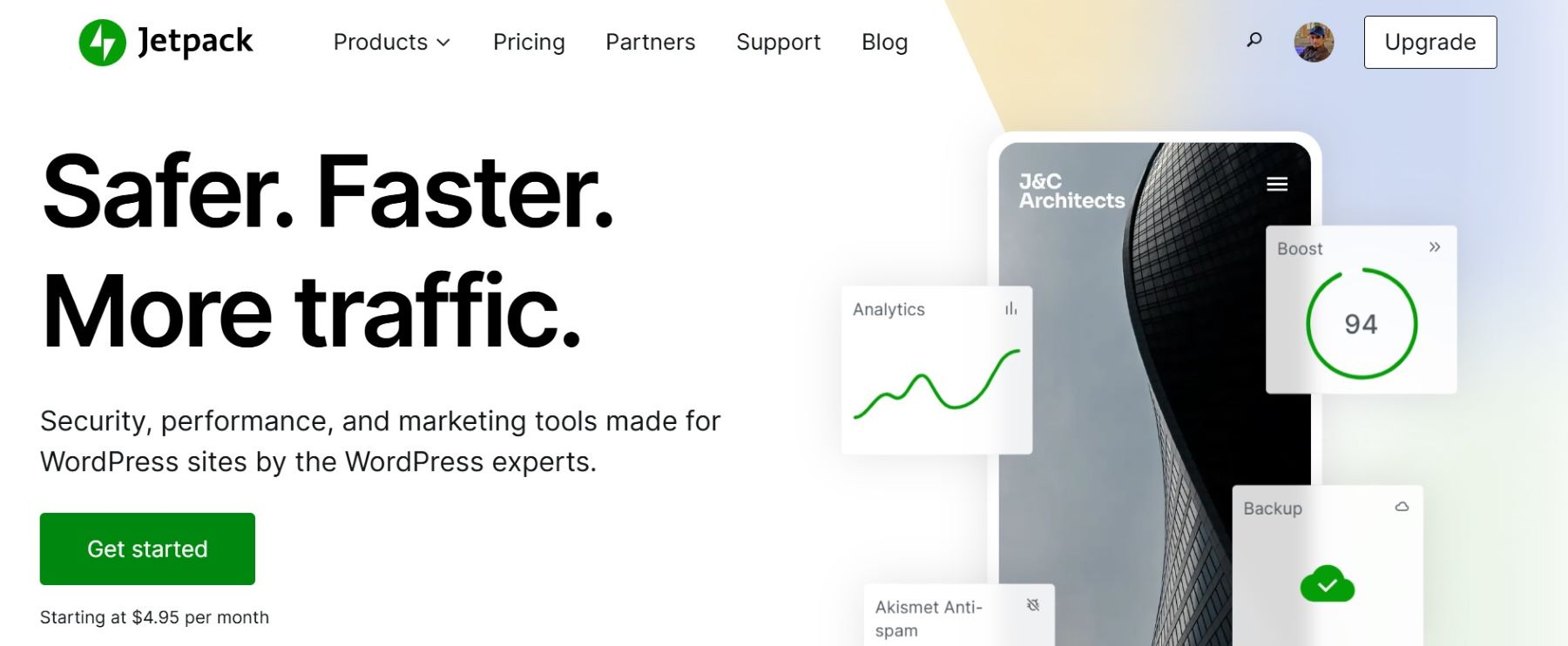
Jetpack is a WordPress plugin that offers multiple features, including website traffic statistics. It is sort of an alternative to other analytics platforms built by the people who know WordPress best. The free version has a super limited view of traffic data (I don’t think the free version is worth it if this is the only feature you want), but the paid version does a pretty good job. I’d take a look at all of Jetpack’s features and carefully review their pricing to see if it is a good fit.
Of course, we’ve gone into more detail in this Jetpack review if you are interested.
8. Google Keyword Planner
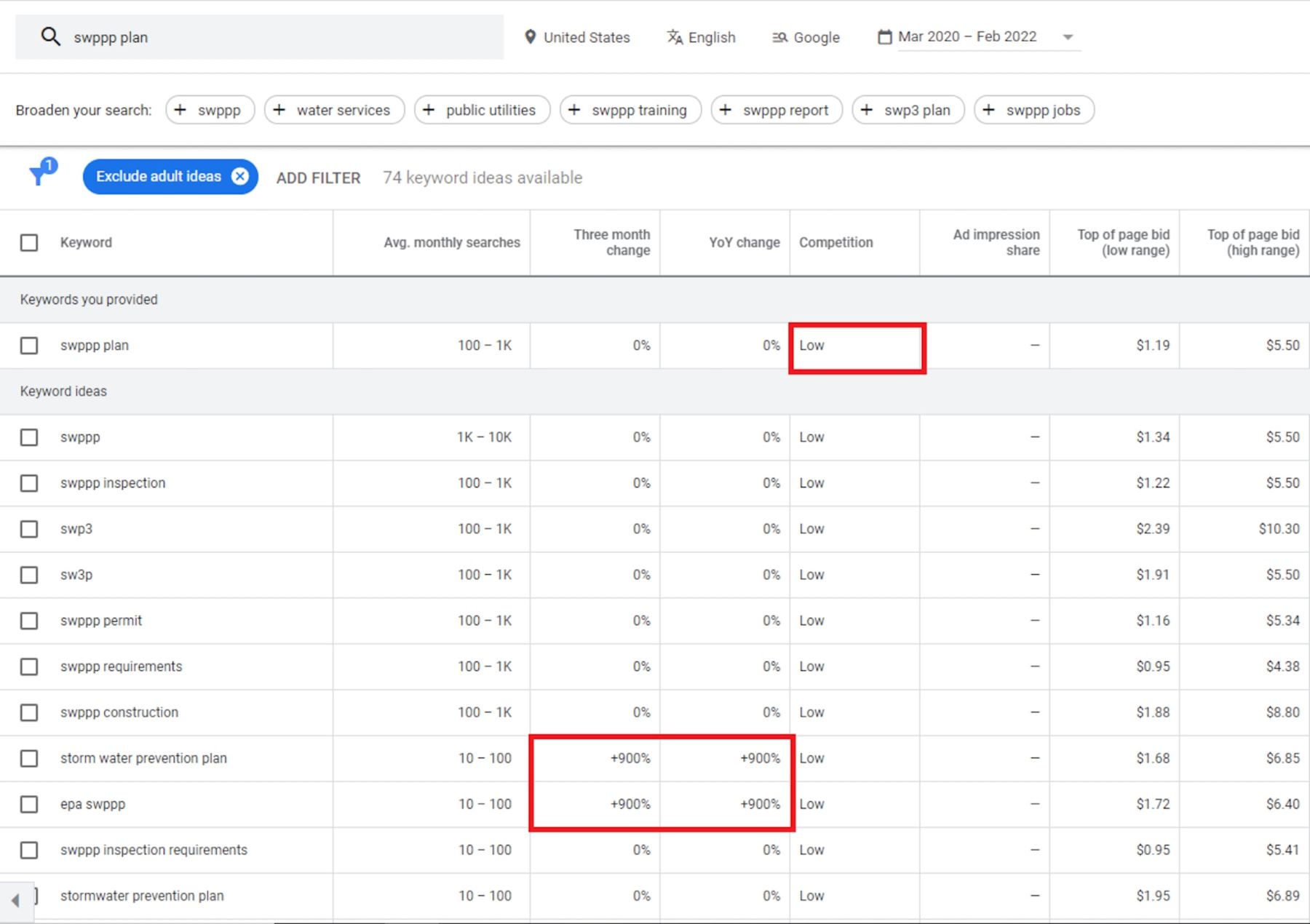
Keyword Planner is actually a tool that Search Engine Marketers (SEM—different from SEO) use to create their Google Ads campaigns. Keyword Planner is good for both use cases since Google Ads work within Google Search Results (except for Display Ads). But why is this under the paid options?
| Keyword Planner Data Points | What they means |
|---|---|
| Keyword | The search term users enter into Google. |
| Avg. monthly searches | The estimated average number of searches per month for the keyword. |
| Three month change | The percentage change in searches over the last three months. |
| YoY change | The year-over-year percentage change in search volume. |
| Competition* | The level of advertiser competition for the keyword (low, medium, high). |
| Ad impression share* | The percentage of ad impressions received compared to total possible. |
| Top of page bid (low range)* | The estimated lower cost per click (CPC) to appear at the top of the search page. |
| Top of page bid (high range)* | The estimated higher CPC to appear at the top of the search page. |
| *These metrics are specifically for running ads but can be decent at intuiting overall competition of your keyword and the value others place on this traffic | |
Google’s Keyword Planner used to be a go-to tool for SEOs to help them find keywords they could create content for and estimate the traffic they could potentially get from each. However, in recent years, Keyword Planner has been verified as showing less accurate keyword data for those using the tool in Google Ads accounts that haven’t had recent Ad Spend.
For instance, for those not running Ads, Keyword Planner could show that a certain keyword gets between 1k-10k monthly searches (a range of 9,000 in search volume). Someone looking at the same keyword from a Google Ads account with recent Ad Spend could see a more accurate (e.g., 5k-6k—a range of only 1,000, for instance).
Either way, Keyword Planner may be of big help to you. Just know that if you pay for and run Google Ads, Google will incentivize you with better data.
Where to Get Started?
The first thing to do is get both Google Search Console and Google Analytics up and running. Search Console is easy to set up, but Google Analytics might be harder—use a plugin if you need to. The sooner you do these things, the sooner you’ll start collecting irreplaceable, first-party data. You can’t get this data anywhere else, and many other tools depend on it to mix with their own data sources.
Once you have those setup, you can use this free Google Looker Studio report to blend together your Google Analytics and Search Console data (if you have enough back-dated data).
Both sources will give you the definitive daily traffic volume for your website. But, as you do more SEO, you will want to start making strategic moves based on approximated data outside your website. To do this, you’ll tend to use keyword research tools to find keywords and their approximate search volume, keyword difficulty, and other metrics that may prove reliable in planning new content. Let’s call this Speculative Traffic Forecasting.
Planning New Content to Gain More Website Traffic
There are any number of ways to speculate the traffic you could get from creating new web pages (or updating older content). In principle, you’ll want to crunch the numbers using the search volume for a search query, the likelihood of obtaining an organic position of #1-#3, and the dominating search features frequently appearing in SERPs relating to your search query.
📈 Assuming that a SERP does not have a featured snippet or an AI Overview, past data leads us to expect traffic like this:
- Position #1: 30% – 40% CTR
- Position #2: 16% – 19% CTR
- Position #3: 8% – 11% CTR
This CTR Report based on organic position is good for understanding the methodology behind calculating these figures.
Featured snippets change the game because they are more prominent in the SERP, and Google shows the result that best answers a user’s question (or the answer by itself—see below). Many searches with a featured snippet could be considered a “zero-click search,” where the searcher gets what they need directly from the SERP without further digging.
📈 Assuming that a SERP has a featured snippet and the search isn’t considered a zero-click search, we can expect organic results to get this kind of traffic:
- Featured Snippet: 40% – 70% CTR
- Position #1 (organic, below snippet): 15% – 20% CTR
- Position #2: 8% – 10% CTR
- Position #3: 5% – 8% CTR
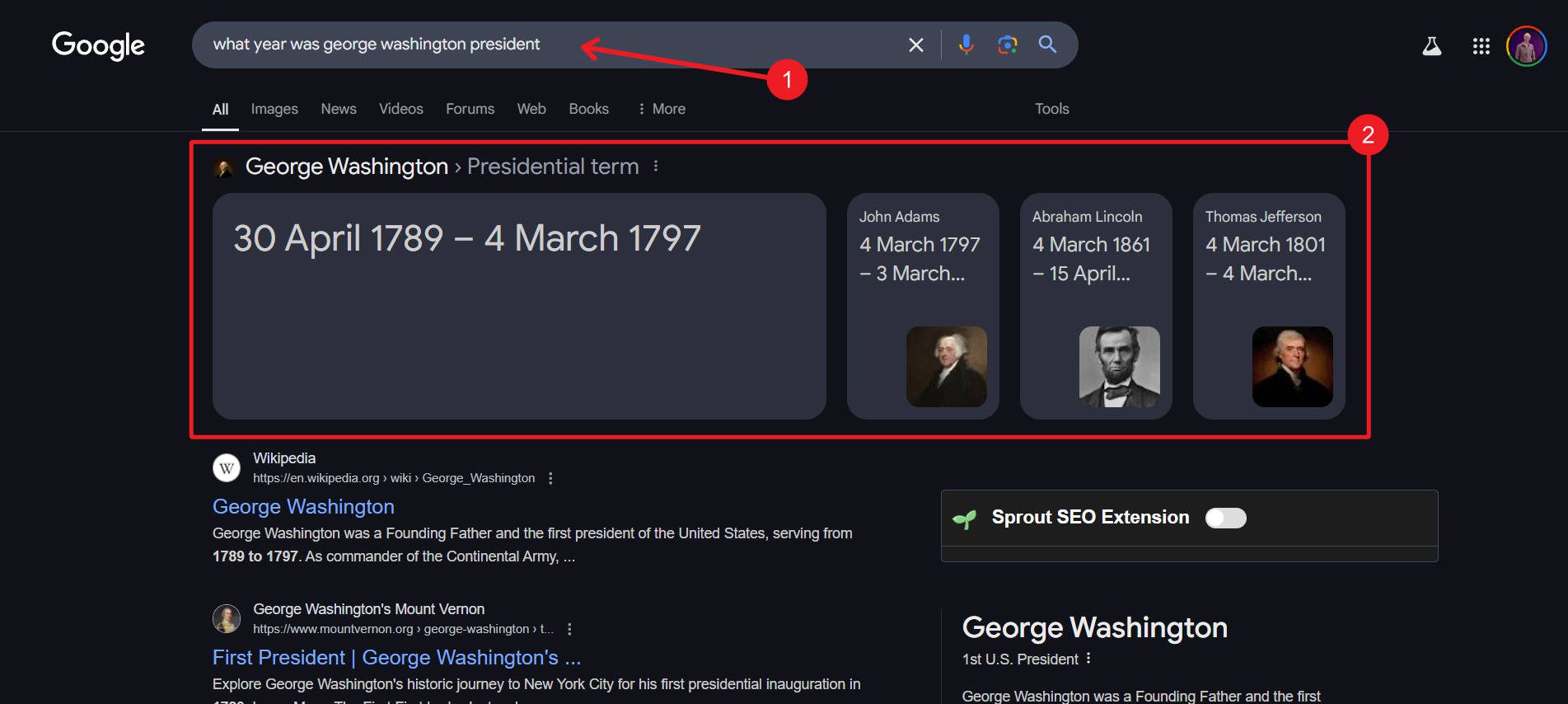
If the searcher here only wants the date and nothing else, this would be a zero-click search
AI Overviews also dramatically change the field for organic results. If an organic result is featured in the AI Overview, CTR could increase by around 3%. However, CTR drops dramatically if a page ranks in the top 3 but is not listed in the AI overview. This is still new, so I have no projections for you.
It’s Fun to Check Website Traffic When It’s Growing
You can use all of the above to estimate the traffic your site could get by pursuing certain keywords with new content. However, this is all speculative. You are never guaranteed a high-ranking position (as a professional writer, I know this all too well). However, these projections can help you make an informed decision about what new content to pursue. To make it a little easier, follow these checklists for on-page SEO.
But there is nothing better than logging into your Search Console dashboard to see that a new piece of content is already generating traffic. You only get this through careful research and creating the best web page you possibly can.
Turn Traffic Insights into Action with Divi
Understanding your website traffic helps you make smarter content decisions, but having the right tools to execute those decisions is just as important. Whether expanding your site with new pages, updating old content, or redesigning your whole website, Divi provides all the design flexibility you need.
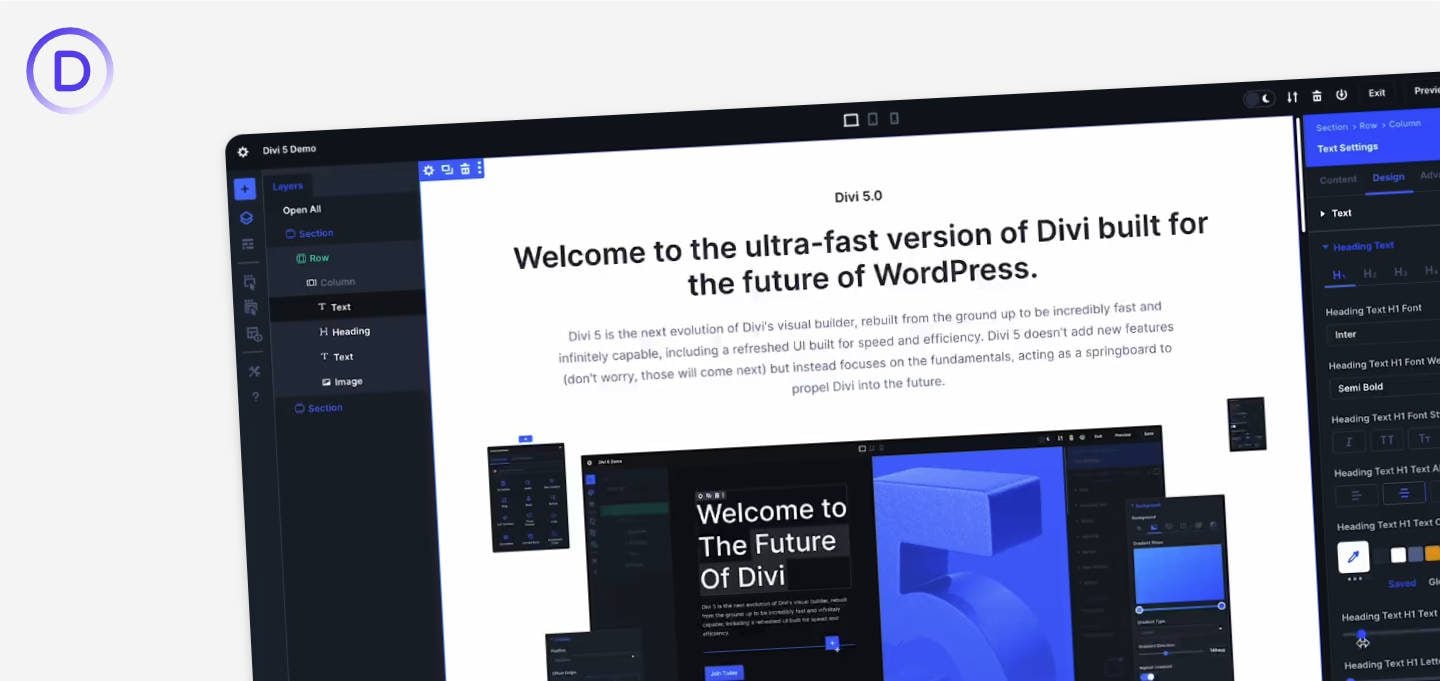
With Divi’s saved layouts, global fonts/colors, and design presets, you don’t need to start from scratch every time. Instead, you can apply your own proven design elements to new pages, ensuring a fast turnaround while keeping your site visually consistent. The faster you can implement insights from your traffic analysis, the sooner you’ll see meaningful improvements in engagement and conversions.
It also helps to have confidence in your website—that’s an intangible.
Did I miss anything? What’s the first thing you’re going to do after reading this guide for checking website traffic? I’m interested! Leave a comment, and I’ll respond.
| Featured Product | Category | ||
|---|---|---|---|
| 1 | UberSuggest | Free Website Traffic Checker Tools | Get |
| 2 | JetPack | Free Website Traffic Checker Tools | Get |
| 3 | SimilarWeb | Free Website Traffic Checker Tools | Get |
| 4 | Google Keyword Planner | Keyword Research and Content Optimization | Get |
| 5 | Ahrefs | Keyword Research and Content Optimization, Building Quality Backlinks, Internal Linking for Better SEO | Get |
| 6 | SemRush | Keyword Research and Content Optimization, Building Quality Backlinks | Get |
| 7 | Yoast SEO | Leveraging On-Page SEO, Internal Linking for Better SEO | Get |
| 8 | Google Pagespeed Insights | Leveraging On-Page SEO | Get |
| 9 | Grammarly | Leveraging On-Page SEO | Get |
| 10 | BuzzSumo | Building Quality Backlinks | Get |
| 11 | Screaming Frog | Internal Linking for Better SEO | Get |

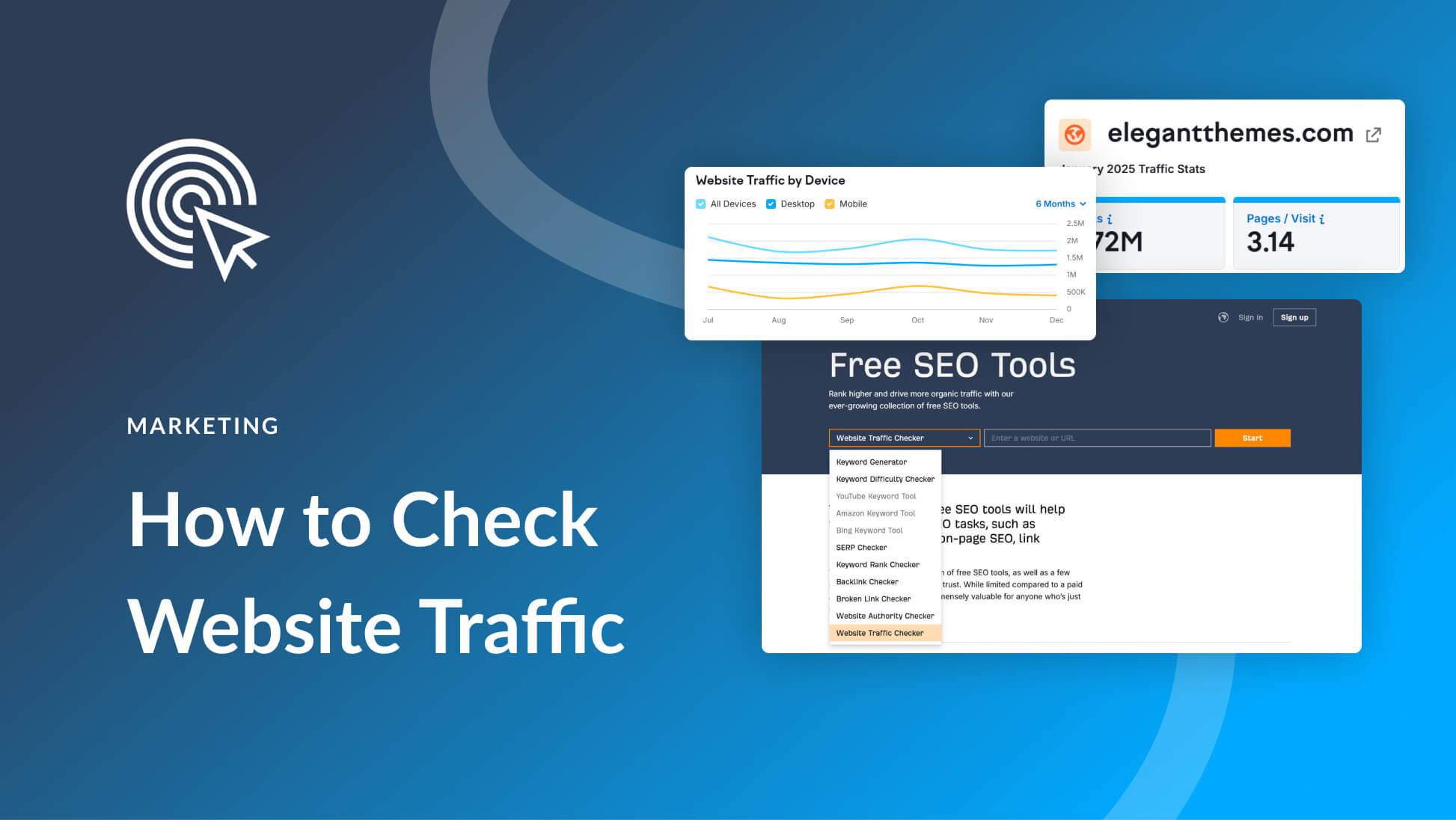
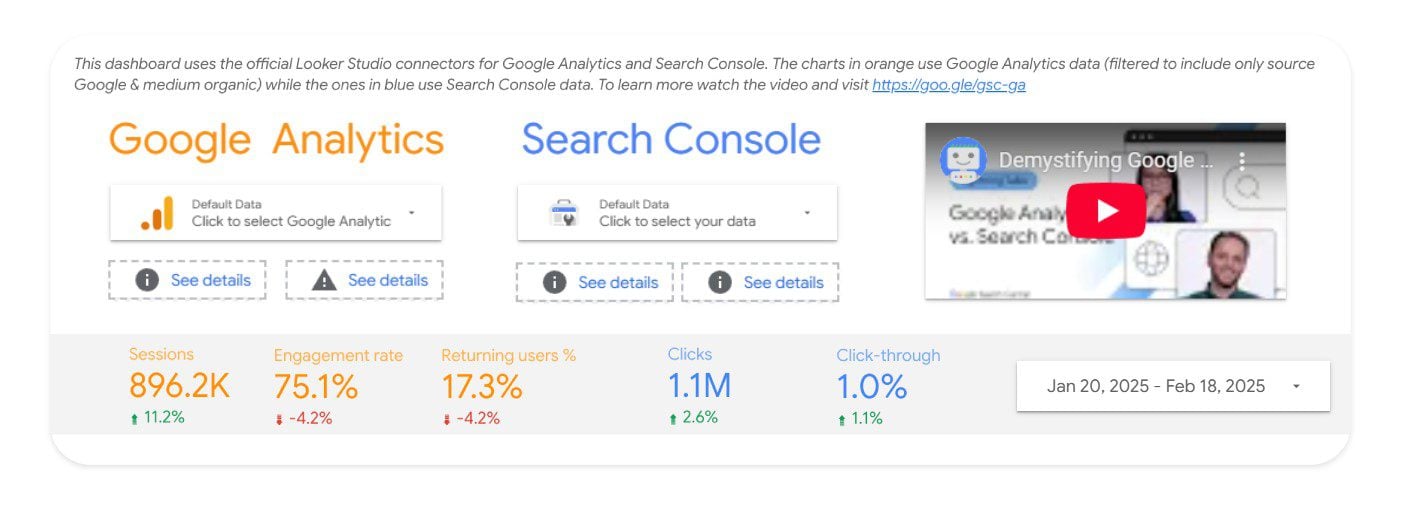


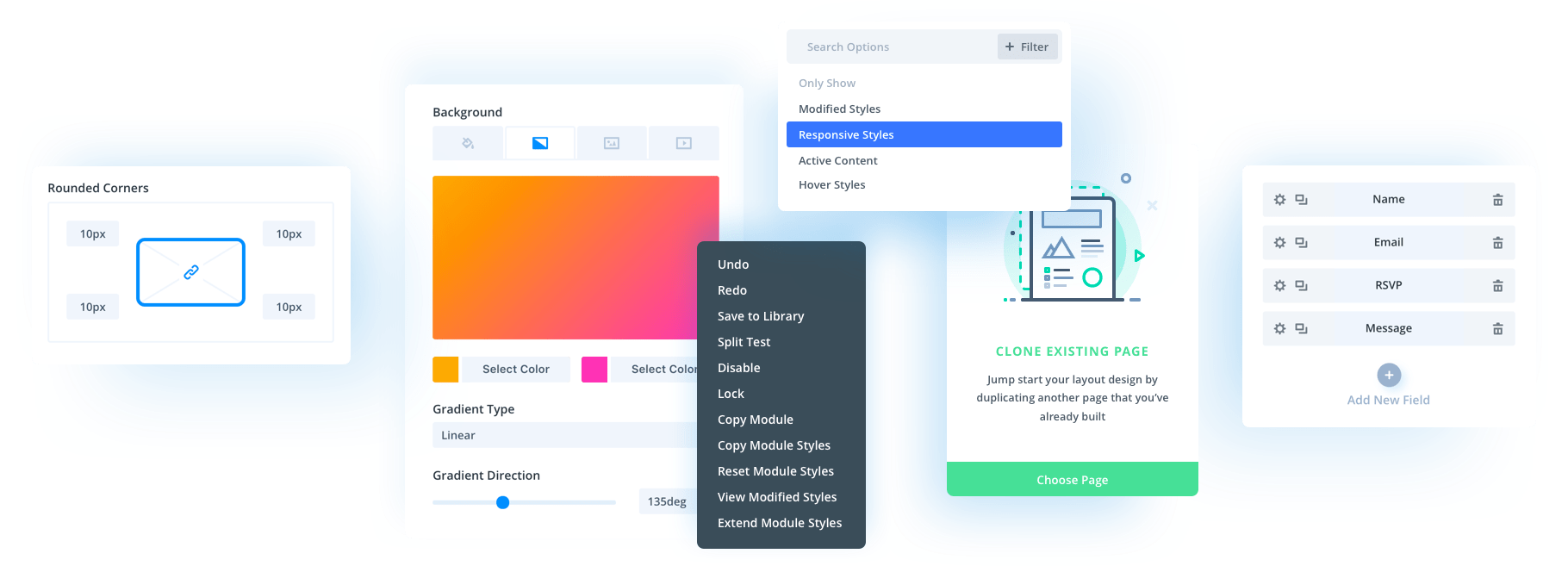



Leave A Reply